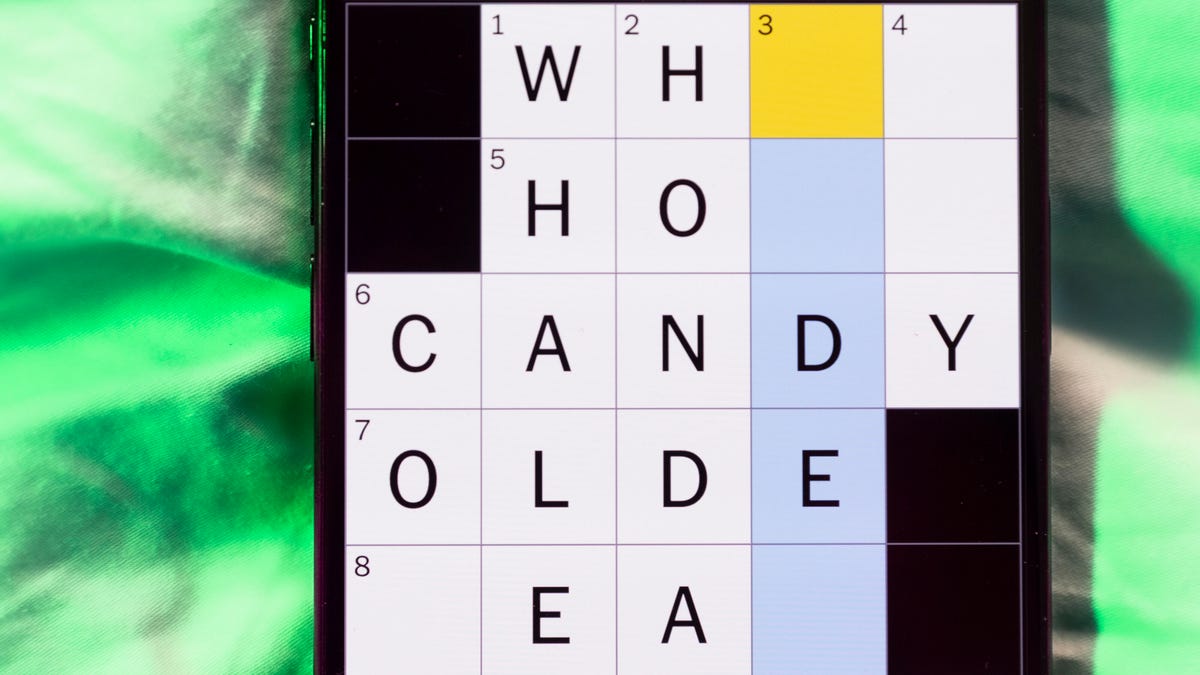Technologies
Best Chromebook 2022: 7 Chromebooks for Any Budget
Whether it’s for work, home or school, these are the best Google Chromebook laptops tested and reviewed by CNET editors.

Chromebooks are known for their ease of use, portability and affordability, meaning a lot of people in the market for a laptop would be better suited with a Chromebook. Using Google’s ChromeOS, Chromebooks are designed to be user-friendly for everyone.
The best Chromebooks tend to be more affordable than traditional laptop options, such as Windows laptops or Apple MacBooks. And since they’re safe and less complicated to use, Chromebooks are anexcellent gift (you can get great Chromebook deals during holiday sales) for kids and less tech-savvy adults in need of just a simple computer. They’ll also suit anyone who wants an inexpensive laptop for productivity and entertainment.
While entry-level Chromebooks don’t feature all the bells and whistles of more premium models, they still get the job done. And for those with some extra money to spend, premium Chromebooks often include features like touchscreens, backlit keyboards and USI pen support for notes or drawing. Now, there are even Chromebooks made for cloud gaming. If you’re looking for the best Chromebook 2022 has to offer, keep reading.
What is the best Chromebook?
The Acer Chromebook Spin 714 is the best Chromebook for 2022 that we’ve tested. It’s full-featured with a fast 12th-gen Intel Core i5 processor and it is built to last. If you’re looking for a Chromebook to use as your one and only computing device, this is a great choice. It is more expensive than the average Chromebook, though. If you want to spend less, consider the 17-inch Acer Chromebook 317 or, if mobility is a concern, the Lenovo Duet Chromebook.
Read more: How to Take a Screenshot on a Chromebook
The best Chromebook is still somewhat subjective, though. A lot comes down to what features you need in a Chromebook and how big of a budget you have. CNET’s editors tested and reviewed all of the Chromebooks on this list and all offer excellent performance and features for their price. Also, if you’re considering an older or used model, be sure to check the auto-update expiration date for the model. The AUE is when ChromeOS stops receiving system updates and is typically eight years, but the date is not the same for every model.
And if you’re still not sure if this type of laptop is right for you, here’s a breakdown of all that a Chromebook can and can’t do compared with a traditional laptop. This list of the best Chromebook models is updated periodically.
Best Chromebooks for 2022
Chromebook FAQs
What is the difference between a laptop and a Chromebook?
A Chromebook is a laptop running on Google’s ChromeOS instead of Microsoft Windows or Apple’s MacOS. This is the biggest difference and it means Windows or Mac software cannot be directly installed and run on a Chromebook. Instead, Chromebooks are designed to use web apps (like those for Microsoft Office 365), Android apps and Linux software. Because ChromeOS is built for efficiency and to take advantage of web or cloud services, the operating system runs well with less expensive hardware. However, while Chromebooks come in a variety of sizes and designs, options are more plentiful with Windows laptops or Apple MacBooks, especially if you need to run demanding software. Again, ChromeOS is what really makes a laptop a Chromebook but there are some other differences to consider before you buy.
What OS does a Chromebook use?
Chromebooks run on Google’s minimalist Chrome operating system, or ChromeOS. When ChromeOS launched more than a decade ago, it was essentially Google’s Chrome web browser. It has grown vastly in capabilities over the years but remains a simple, lightweight and secure operating system that can run briskly on even low-end components. And, even though ChromeOS can do much more today, the fact is quite a lot can be done entirely on the web these days. Take stock of everything you do on a daily basis and you may find there’s nothing you can’t accomplish with ChromeOS.
What are the pros and cons of a Chromebook?
There are several pros to a Chromebook but one big con will instantly rule out buying one. Chromebooks are not natively compatible with Windows or Mac software. If you need to run a specific Windows or MacOS program, you will not be able to do so directly from a Chromebook. That said, there are ways around it including finding a substitute web or Android app, or a Linux equivalent.
Also, if you need advanced photo- and video-editing capabilities, you’ll want a Windows, Mac or Linux laptop. Basic photo and video editing are fine, but Chromebooks typically don’t offer the graphics performance you need for demanding tasks or, again, the option to install Windows or Mac software and games.
One other potential negative is the Auto Update Expiration date, or AUE. Currently, non-Google hardware is only supported for so long before it stops receiving ChromeOS and browser updates, including those for security. For models released now, the date is roughly seven to eight years from the initial release of the device, but that’s not always the case. Google maintains a list of AUE dates for all models, and you should check it before you buy a Chromebook, new or used.
There are many pros to a Chromebook, but the biggest is the price. While premium models start at around $500, you can find excellent options for everyday use for $200 to $300. The Lenovo Duet Chromebook, for example, is a two-in-one Chromebook with a detachable keyboard cover so it can be used as a tablet or a laptop and starts under $300. Like other laptops, though, a higher-end Chromebook generally means a better experience.
Also, some of the same reasons Chromebooks are popular for schools and businesses make them excellent family computers. Everyone in the family can have separate Google accounts, and signing in gives them access to only their stuff and not yours. Accounts for kids can be managed with Google Family Link. It’s nearly impossible for Chromebooks to be corrupted with viruses or other malware. And if it isn’t running quite right, you can reset it with Chrome’s Powerwash feature and in a couple of minutes, the system is clean and fresh. Just sign into your Google account and the Chromebook is completely restored.
Read more: How to Reset a Chromebook in Under a Minute
Can I use any USB-C charger for my Chromebook?
Yes and no. Since 2017, new Chromebooks all charge via their USB-C ports. Chromebooks typically need either a 45- or 65-watt power adapter. You’ll need to check the specs for your specific model to find its power needs, typically found on the bottom of the Chromebook or on the manufacturer’s site. (If it’s given in volts and amps, you can get watts by multiplying the two together e.g. 15 volts x 3 amps equals 45 watts.) Using a charger that doesn’t meet the power demands of the Chromebook may still charge it but at a slower rate. Also, if you’re using the Chromebook while using a low-power charger, it will take even longer to charge fully. On the upside, Chromebooks will display a notification if the USB-C cable you’re using won’t support the necessary performance.
How we test computers
The review process for laptops, desktops, tablets and other computer-like devices consists of two parts: performance testing under controlled conditions in the CNET Labs and extensive hands-on use by our expert reviewers. This includes evaluating a device’s aesthetics, ergonomics and features. A final review verdict is a combination of both those objective and subjective judgments.
The list of benchmarking software we use changes over time as the devices we test evolve. The most important core tests we’re currently running on every compatible computer include: Primate Labs Geekbench 5, Cinebench R23, PCMark 10 and 3DMark Fire Strike Ultra.
A more detailed description of each benchmark and how we use it can be found in our How We Test Computers page.
More laptop and home office advice
- Best 15-Inch Laptops
- Best Monitor Deals
- Best Laptop Backpack for 2022
- Best Printer for 2022
- 5 Ways to Share Files With Your Team While Working From Home
- Best 2-in-1 PCs for When You Need a Laptop and Tablet
- Best Office Chairs to Buy for 2022
- Best Racing Wheel and Pedals for iRacing and Your Budget
- Best Android Tablet for 2022
- 7 Must-Have Ergonomic Upgrades for Your Home Office
- Best Desktop PC for 2022
Technologies
Yes, This Swimming RoboTurtle Is Adorable. It Also Has an Important Environmental Mission
Beatbot is best known for making pool-cleaning robots, but it was its swimming robot turtle that won our hearts at CES 2026.

Few things in life have made me feel more privileged and awestruck than the opportunity to swim with sea turtles in their natural environment. The way in which these gentle creatures navigate through their underwater world with their deliberate and careful fin strokes is utterly mesmerizing to watch.
It’s a distinctive style of movement — so much so that when I saw Beatbot’s RoboTurtle swim across a water tank on the show floor at CES 2026, I knew that this wasn’t simply just a pool cleaner robot with turtle features tacked on. This was a studied example of biomimicry in action.
The reason for this is that the company’s engineers went on a two-month expedition to study sea turtles in their natural environment, Beatbot’s Eduardo Campo told me as we watched Turtini (the team’s affectionate nickname for RoboTurtle) splash around in its pool. «We did a lot of motion capture, like the things they use in movies, because we need to develop those joints that it has,» he said.
This isn’t RoboTurtle’s first time at CES — it also appeared in 2025 as a static concept. This is the year, however, it’s found its fins, so to speak. Not only can it swim, but it can also respond to hand gestures: I throw it an OK gesture, and it dances in response. But as cute and limber as it is, RoboTurtle is a robot with an important mission.
RoboTurtle is an environmental research tool, built with input from researchers and NGOs, which can go where humans or other machines cannot for fear of disturbing complex and delicate underwater ecosystems, particularly coral reefs. It can move silently and naturally in a way that won’t scare wildlife, monitoring water quality and fish numbers with its built-in camera.
«One of the groups that we’re working with, they want to study the coral reefs in near Indonesia,» said Campo. «There was a very big incident over there with a boat that came up onto a coral reef and it disrupted the environment, [so] they want the least intrusive robot possible.»
The group wants to deploy RoboTurtle for certain periods every year to monitor the recovery of the coral and monitor the fish population, he added. Beatbot is currently training the built-in AI to give RoboTurtle monitoring and recognition skills.
At CES, I watched RoboTurtle paddle about only on the surface of the pool, but it can also dive down up to five meters. However, it needs to resurface to send data and its GPS signal back to base, much like a real turtle that needs to come to the surface to breathe. This also gives it a chance to recharge via the solar panel on its back.
Even though I was impressed with RoboTurtle’s swimming ability, Campo estimates that the Beatbot team is still a year and a half away from perfecting its technique, with the robot ready for full deployment in between three to five years.
CES 2026 is a show where tech with a real purpose feels scarce, so it sure is refreshing to see a company use its expertise to build something designed with a sustainable future in mind. It might be a while until we see RoboTurtle take to the seas, but I’m glad that I got to witness it at this stage of its journey.
Technologies
These Tiny Robots Are Smaller Than Grains of Salt and Can Think, Move and Swim
Despite their size, the robots can navigate liquids, respond to their environment and operate without external control.

Robots smaller than a grain of salt? It sounds like science fiction, but researchers have developed autonomous microrobots that can move through liquids, sense their environment and operate independently using only light as a power source.
The microrobots, developed by researchers at the University of Pennsylvania and the University of Michigan, measure roughly 200 by 300 by 50 micrometers. Yet they can detect temperature changes, follow programmed paths and function independently for months at a time.
Their work was reported this week in two scientific journals, Science Robotics and Proceedings of the National Academy of Sciences.
Don’t miss any of our unbiased tech content and lab-based reviews. Add CNET as a preferred Google source.
«We’ve made autonomous robots 10,000 times smaller,» senior author Marc Miskin, assistant professor in electrical and systems engineering at Penn Engineering, said in a statement. «That opens up an entirely new scale for programmable robots.»
Powered entirely by light, the robots don’t move using mechanical limbs. Instead, they generate tiny electrical fields that push ions (electrically charged particles) in fluid to create motion, an approach better suited to the unique physics of the microscopic world, where traditional motors don’t work.
Unlike earlier microrobots, these devices combine sensing, computing, decision-making and movement in a single, self-contained system at an extremely small scale.
Previous efforts in microrobotics have often relied on external controls, such as magnetic fields or physical tethers, to guide movement. These new microrobots, however, incorporate their own miniature solar cell-powered processors, allowing them to respond to their environment, communicate through patterned movements visible under a microscope and carry out tasks without outside direction.
Potential applications include monitoring biological processes at the cellular level, supporting medical diagnostics or helping assemble tiny devices. Because each robot can be mass-produced at very low cost, the technology opens new avenues for research and engineering at scales that were previously unreachable.
Technologies
Today’s NYT Mini Crossword Answers for Wednesday, Jan. 7
Here are the answers for The New York Times Mini Crossword for Jan. 7.

Looking for the most recent Mini Crossword answer? Click here for today’s Mini Crossword hints, as well as our daily answers and hints for The New York Times Wordle, Strands, Connections and Connections: Sports Edition puzzles.
Need some help with today’s Mini Crossword? I thought today’s was a tough one — I couldn’t solve too many of the Across clues and had to move on to the Down clues to fill in the answers. Also … look at the answer for 3-Down! Are we using Gen Z slang now as if everyone knows it? Anyway, if you want all the answers, read on. And if you could use some hints and guidance for daily solving, check out our Mini Crossword tips.
If you’re looking for today’s Wordle, Connections, Connections: Sports Edition and Strands answers, you can visit CNET’s NYT puzzle hints page.
Read more: Tips and Tricks for Solving The New York Times Mini Crossword
Let’s get to those Mini Crossword clues and answers.
Mini across clues and answers
1A clue: Planning to, informally
Answer: GONNA
6A clue: ___ tolls (GPS setting)
Answer: AVOID
7A clue: Pulsed quickly, as the heart
Answer: RACED
8A clue: Draw an outline of
Answer: TRACE
9A clue: Prefix with loop for theoretical high-speed transport
Answer: HYPER
Mini down clues and answers
1D clue: Wayne’s sidekick in «Wayne’s World»
Answer: GARTH
2D clue: Egg-producing organ
Answer: OVARY
3D clue: «I’m serious!,» in slang
Answer: NOCAP
4D clue: Sister’s daughter
Answer: NIECE
5D clue: Snake that sounds like it would be good at math?
Answer: ADDER
Don’t miss any of our unbiased tech content and lab-based reviews. Add CNET as a preferred Google source.
-

 Technologies3 года ago
Technologies3 года agoTech Companies Need to Be Held Accountable for Security, Experts Say
-

 Technologies3 года ago
Technologies3 года agoBest Handheld Game Console in 2023
-

 Technologies3 года ago
Technologies3 года agoTighten Up Your VR Game With the Best Head Straps for Quest 2
-

 Technologies4 года ago
Technologies4 года agoBlack Friday 2021: The best deals on TVs, headphones, kitchenware, and more
-

 Technologies4 года ago
Technologies4 года agoVerum, Wickr and Threema: next generation secured messengers
-

 Technologies4 года ago
Technologies4 года agoGoogle to require vaccinations as Silicon Valley rethinks return-to-office policies
-

 Technologies4 года ago
Technologies4 года agoOlivia Harlan Dekker for Verum Messenger
-

 Technologies4 года ago
Technologies4 года agoiPhone 13 event: How to watch Apple’s big announcement tomorrow
